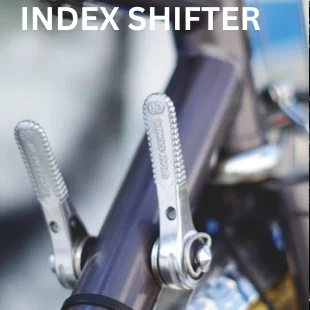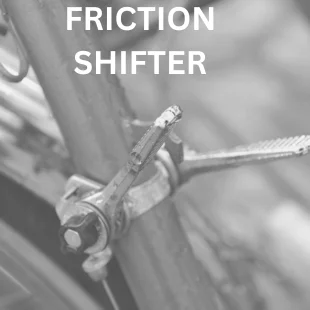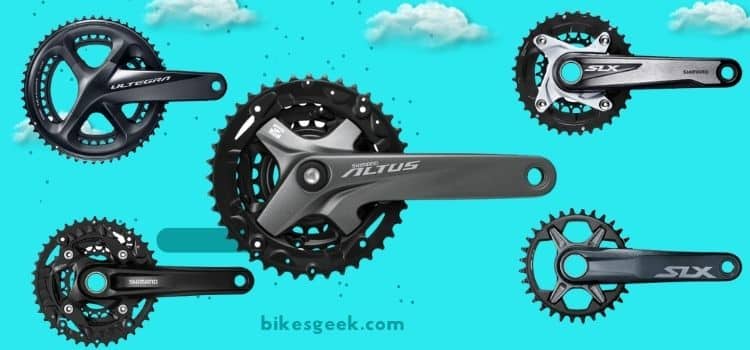Friction Shifters Vs Indexed Shifters- A Side By Side Comparison Guide
Friction shifters vs indexed shifters: A comprehensive comparison of two gear shifting systems in cycling. Friction shifters, also known as down tube shifters, allow manual adjustment of cable tension for gear changes. They offer reliability, compatibility with various drivetrains, and are cost-effective.
However, they require skill and take time to find the right gear. On the other hand, indexed shifters use preset notches and clicks for quick and precise gear changes. They are beginner-friendly, readily available, and suitable for competitive racing. While indexed shifters may need precise tuning, they provide easy gear selection. Both systems have their pros and cons, catering to different riding styles and preferences.
Friction shifters require manual cable adjustment, offering reliability and compatibility. Indexed shifters use preset notches for quick, precise gear changes, suitable for beginners and racing.
Comparison Table
| Aspect | Friction Shifters | Indexed Shifters |
| Mechanism | Manual adjustment of cable tension | Preset notches and clicks for each gear change |
| Ease of Use | Requires skill to find the right gear | Easy and user-friendly, suitable for beginners |
| Availability | Less common; not widely produced | Standard system on modern bikes, readily available |
| Shifting Speed | Slower; requires more time to find gears | Quick and precise gear changes with each click |
| Compatibility | Compatible with a wide range of drivetrains | Limited to specific speed cassettes; may require adjustments for compatibility |
| Maintenance | Easy to maintain; fewer moving parts | May require precise tuning and adjustments for optimal performance |
| Cost | Relatively cheaper | More expensive than friction shifters |
| Reliability | Robust and reliable | Reliable when properly tuned, but may suffer from mis-shifts if not adjusted correctly |
| Suitability for Racing | Less suitable; more skill required | Suitable for competitive racing with quick and precise gear changes |
| Use in Bikepacking | Suitable; offers reliability and ease | May not be ideal in remote areas due to limited availability of specific replacement parts |
What Is An Indexed Shifter?

An indexed shifter is a type of bicycle gear shifting mechanism that uses notches arranged in a helical manner. It is also known as “indexed gearing” or an “indexed gear.” When a rider moves the lever over each notch, the system produces a clicking sound, and each click corresponds to the movement of the derailleur to shift gears one step up or down.
What Are Friction Shifters?

Friction shifters, also known as “down tube shifters,” are levers that move up and down to manually adjust the tension on the gear cable and change gears accordingly. Unlike indexed shifters, friction shifters do not have preset notches or clicks, and the rider has infinite adjustment of the cable to change gears.
How Is Friction Shifting Different from Index Shifting?
The main difference between friction shifting and index shifting lies in how gears are changed. Indexed shifters use preset notches or clicks to regulate the movement of the derailleur, making gear changes easy and precise. On the other hand, friction shifters require the rider to manually adjust the cable tension, providing more control but requiring a bit of skill to find the desired gear.
How Does An Index Shifter Work?
Indexed shifters have a preset cable pull to cage movement ratio. This means that for every notch the shifter is moved, the chain moves one step up or down. With each click of the shifter’s ratchet, the indexed shifters pull or release an amount of cable that corresponds to moving the chain from one gear to another. It is essential to ensure compatibility between the shifter and cassette for smooth gear changes.
Where On the Bike Are Friction Shifters Positioned?
Friction shifters can be located in various positions on the bike, depending on the rider’s preference. The most common styles are downtube shifters and stem shifters. Downtube shifters are positioned near the top of the bike’s downtube, while stem shifters are mounted on the handlebar stem.
Pros Of Indexed Shifters
Indexed Shifters Are Easy To Use For Beginners:
Indexed shifters provide clear and audible feedback with each gear change, making them easy for beginners to use. The clicking sound guides riders on how far to move the lever, eliminating the learning curve associated with friction shifting.
Indexed Shifter Systems Are Readily Available:
Indexed shifters have become the standard system on modern bikes, and they are readily available from various manufacturers. Finding replacements or upgrading to indexed shifters is easy due to their popularity.
Riders Can Shift More Often:
Indexed shifting allows riders to shift gears quickly and accurately, reducing the chances of mis-shifting. With precise cable adjustment, a certain number of notches move the cage to a preset cog, enabling riders to shift gears more frequently without the chain falling between cogs.
They Are Best for Race Bikes:
In competitive racing, precise and quick gear changes are crucial. Indexed shifters provide reliable and consistent shifting, reducing the risk of mis-shifts, which is particularly important during intense races.
Disadvantages Of Indexed Shifters
The Setting Has To Be Precise:
Indexed shifters require precise tuning and adjustment for smooth gear changes. If one component of the drivetrain malfunctions, the indexed shifting system may not work properly.
Drivetrain Adjustment Is A Bit Complex:
Synchronizing the drivetrain with indexed shifters can be more challenging, and not every bike owner may have the expertise to perform the adjustments accurately.
Index Shifters Are More Expensive:
Indexed shifters are generally more expensive than friction shifters. This higher cost can be a deterrent for some bike owners, especially when they need to replace broken components.
Index Shifters Don’t Work With A Wide Range Of Cogs:
Indexed shifters are designed to work with specific speed cassettes, meaning they are limited in terms of compatibility. Upgrading to a different number of cogs may require changing the shifters or resetting them.
Pros Of Friction Shifters
They Are Compatible With A Wide Range Of Drivetrains:
Friction shifters can work with various cassettes, making them versatile and suitable for touring bikes. They offer the advantage of compatibility with different drivetrain configurations.
Friction Shifters Are Easy To Maintain:
Friction shifters are easier to maintain than indexed shifters. The system is simple to assemble and disassemble, making cleaning and maintenance hassle-free for bike owners.
Requires Less Tune-Up:
Unlike indexed shifters, friction shifters do not require precise tuning for every component change. They are forgiving in terms of cable adjustment, making them easier to set up and maintain.
Friction Shifters Are Relatively Cheaper:
Friction shifters are more affordable compared to indexed shifters. This makes them an attractive option for budget-conscious bike owners, and even beginners can afford to buy a new set.
Cons Of Friction Shifters
It Takes Time To Learn How To Use Friction Shifters:
Shifting with friction shifters requires a bit of skill and practice to get used to finding the right gear without the aid of notches or clicks. Beginners may experience some missed shifts initially.
Most Manufacturers No Longer Produce Friction Shifters:
With indexed shifters being the standard in the market, many manufacturers have shifted away from producing friction shifters, making them less widely available.
Friction Shifters Don’t Offer Automatic Gear Changes:
Unlike indexed shifters, friction shifters do not provide automatic gear changes with each click, requiring the rider to manually adjust the cable tension.
Why Has Indexed Shifting Displaced Friction Shifting?
Indexed Shifter Are More Beginner Friendly:
Indexed shifters offer a user-friendly experience with clear and audible feedback, making them easier for beginners to use compared to friction shifters.
Indexing Ensures No Miss-Shifting:
The preset notches in indexed shifters minimize the risk of mis-shifts, ensuring smooth and precise gear changes with each click.
You Can Turn Off The Indexing:
Indexed shifters often come with the option to switch off the indexing function, allowing riders to manually adjust the cable tension like friction shifters when needed.
Friction Shifters vs Indexed Shifters – Similarities
Friction and indexed shifters share several similarities despite their differences:
Review 1: Friction Shifters
By Jake P. (4.5/5 stars)
I’ve been using friction shifters on my vintage bike, and they have exceeded my expectations. The simplicity and reliability of these shifters are impressive. They work flawlessly on rough terrains during my bikepacking trips, making gear changes a breeze. The manual cable tension adjustment ensures smooth shifts, and their lightweight design is a bonus. It took me a little time to get used to them, but once I did, I found them to be a fantastic option. If you’re on a budget and need dependable shifters, I highly recommend giving friction shifters a try.
Review 2: Indexed Shifters
By Sarah M. (5/5 stars)
Indexed shifters have completely transformed my road bike experience. The ease of use and precise gear changes are fantastic. Each click provides immediate feedback, eliminating any misalignment issues. As a beginner, I find them incredibly user-friendly. The availability of indexed shifting sets and compatibility with different drivetrains are major pluses. The only downside is the higher cost, but the performance justifies the price. If you want a smooth and reliable gear-shifting system, go for indexed shifters. They have made cycling much more enjoyable for me.
Review 3: Friction Shifters vs. Indexed Shifters
By Alex R. (4/5 stars)
The choice between friction shifters and indexed shifters depends on personal preference. As a touring enthusiast, I value the reliability and robustness of friction shifters. They have served me well on long journeys, offering compatibility with various drivetrains. However, they do require some skill to use efficiently. On the other hand, indexed shifters provide a seamless and beginner-friendly experience. The precise gear changes and availability of replacement parts are significant advantages. Both systems have their pros and cons, so consider your riding style before making a decision.
Should You Get Friction Shifters For Your Bike?
Whether to choose friction shifters or indexed shifters depends on your preferences, riding style, and specific needs. Here are some considerations:
If you value reliability, simplicity, and compatibility, friction shifters may be a good choice. They are robust, less prone to failure, and can work with various drivetrain configurations.
For beginners or riders who prefer easy gear changes and less time spent fine-tuning, indexed shifters may be more suitable. They provide precise and quick gear changes, reducing the risk of mis-shifts.
If you are into bikepacking or touring, where reliability and ease of maintenance are critical, friction shifters may be preferred due to their simplicity and ability to function even with slight drivetrain issues.
However, if you prioritize speed, quick gear changes, and precise shifting, indexed shifters are a better option, especially for competitive racing.
FAQs – Frequently Asked Questions
Final Word – Friction Shifters Vs Indexed Shifters
In conclusion, friction shifters and indexed shifters have their respective advantages and disadvantages, and the choice between the two depends on the rider’s preferences, riding style, and specific needs. Friction shifters offer reliability, simplicity, and compatibility, making them suitable for bikepacking and touring. On the other hand, indexed shifters provide ease of use, quick gear changes, and precision, making them popular among beginners and competitive riders. Ultimately, both systems have stood the test of time and continue to be used by cyclists worldwide for different applications.






